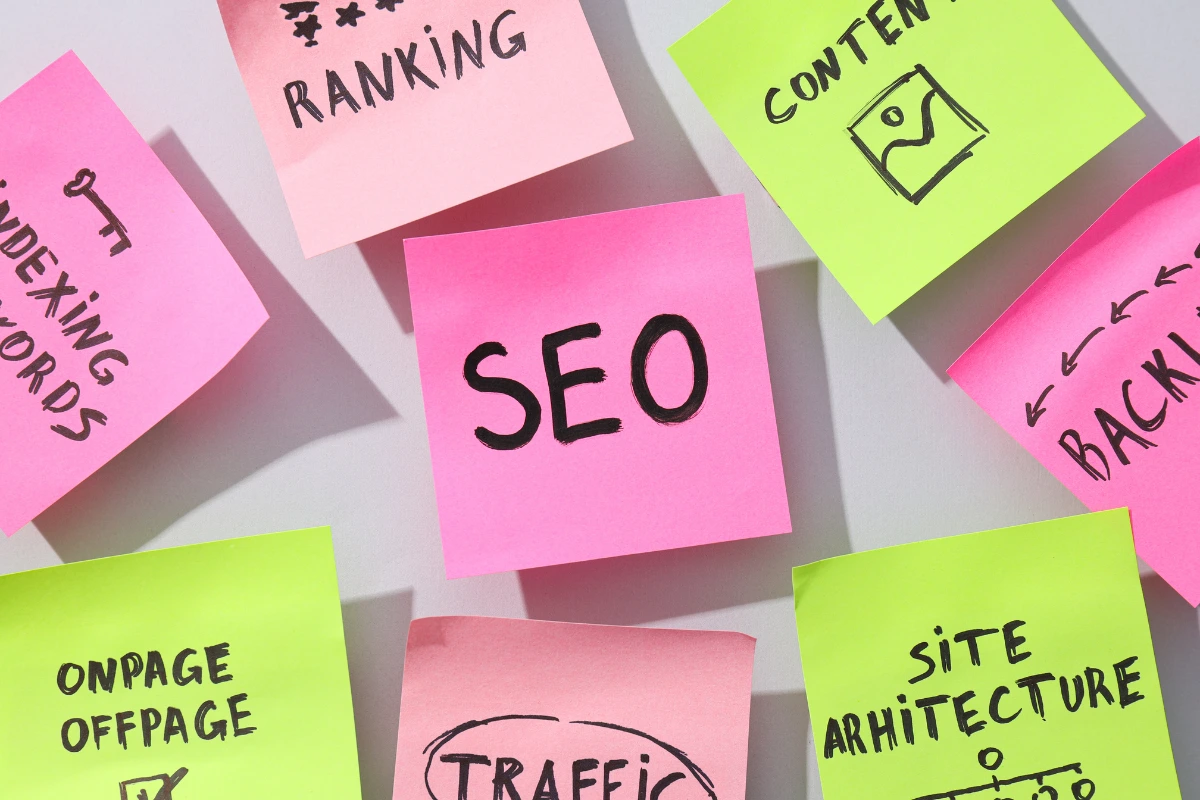AI & SEO-Driven Content Marketing: Finding the True ROI for B2B Companies in 2025

In today’s fast-paced digital world, businesses are increasingly relying on AI-driven tools to optimise their SEO strategies and improve their content marketing efforts. With the rise of AI, understanding how to measure the true ROI of SEO-driven content has become a critical aspect of B2B marketing strategies. If you are struggling to calculate the return on investment (ROI) of your SEO content in a landscape where search behaviour is rapidly evolving, you’re not alone.
SEO is no longer just about rankings and traffic. It’s about understanding how your content contributes to the entire buyer’s journey, from awareness to conversion. In this article, we will delve into how B2B companies in 2025 can connect SEO initiatives to tangible revenue impacts, with the help of AI-powered tools. Let’s break down the complexities of calculating ROI in the age of AI and SEO.
Connecting SEO with Revenue: Is It Possible?
First things first, let’s answer the most pressing question: Can SEO be directly linked to revenue? The answer is a resounding yes!
SEO is no longer a one-dimensional strategy focused on getting your website to the top of search engine result pages (SERPs). It plays a significant role in future conversions and helps prospects discover your brand, products, or services. When your content is discoverable on search engines, it nurtures your prospects by providing them with valuable, informational content that aids them in their research before making a purchase.
However, tracking this journey isn’t as simple as it sounds. With AI tools rapidly transforming the way search results are delivered, traditional SEO strategies are facing challenges in capturing the full impact of your content. This is where AI-driven SEO can help you track your content’s influence across multiple touchpoints, making it easier to connect SEO with actual revenue.
The Buyer’s Journey in the Age of SEO and AI
To understand how SEO contributes to revenue, it’s essential to consider the buyer’s journey. Your prospect’s journey begins the moment they discover your content on search engines, be it through a traditional search or an AI-powered tool. From there, the process typically involves months of extensive product research, which could include reading blog posts, checking comparisons, watching videos, or interacting with chatbots and AI systems.
Step By Step Guide to AI & SEO-Driven Content Marketing
Despite SEO’s importance in making content discoverable, tracking the ROI of non-conversion pages—those that help nurture leads before a sale—is often overlooked. But that’s about to change with AI tools designed to follow every step of your prospect’s journey.
Step 1: Optimising Content for Both Search Engines and AI Tools
As AI tools, like chatbots and virtual assistants, become increasingly popular, traditional search engine volume is predicted to drop by 25% by 2026, shifting traffic towards AI agents. As a result, SEO must now be aligned with AI search to maintain visibility and relevance.
How do you create content that gets seen on both traditional search engines and AI-driven tools?
- Search Your Brand and Competitors: Start by searching for your brand or product and see what AI tools recommend. This will help you understand whether your content is visible or if competitors are outshining you
Try prompts like- “What is the best solution for…”
- “Top tools for…”
- “Is [competitor] better than…”
- Optimise Your Existing Content: Optimising your content to feed AI answer engines is crucial. Focus on:
- Proper site and article structure: Use clear headings, semantic markup, and metadata.
- Lists and bullet points: AI tools favour scannable content like lists and comparisons.
- Mobile responsiveness: AI tools often pull from mobile-optimised websites, so ensure your content is easily accessible on any device.
- Quality backlinks: Just like Google, AI tools favour authoritative content linked to credible sites.
- Maintain Content Freshness: Updating old content with new, relevant information ensures that your content stays visible on AI platforms, as well as traditional search engines. AI tools favour updated content with context that helps prospects in their research.
Step 2: Understanding the True Cost of SEO Content
When it comes to measuring the ROI of SEO content, there’s a lot more to consider than just the cost of content creation. In 2025, with the rise of AI, SEO content creation is a more complex process. The cost involves multiple aspects, from production to distribution and maintenance.
Breaking Down the Real Cost of SEO
To accurately calculate your ROI, you need to consider all the resources that go into your SEO-driven content:
- People: Writers, designers, SEO experts, developers, and editors are all necessary to create high-quality SEO content.
- Tools: SEO tools, keyword research databases, analytics platforms, and content optimisation software are essential for creating effective SEO strategies.
- Distribution: Paid support for SEO content distribution, social media promotions, and email newsletters are additional costs to factor in.
- Maintenance: Regularly refreshing content, updating internal links, and improving the user experience are important to keep content relevant.
Tracking Content Performance
To measure ROI accurately, you need to track more than just traffic. Here’s how:
- Organic Traffic: Monitor traffic from both traditional search and AI-driven content surfaces.
- Engagement Metrics: Measure time spent on page, bounce rate, and how users engage with content (e.g., through comments, shares, or click-throughs).
- Cost per Lead: Track the cost of generating a lead through SEO-driven content, and how much that lead contributes to the sales pipeline.
- Assisted Conversions: Even if content doesn’t directly lead to a conversion, it plays a role in nurturing leads. Measure the assisted conversions from SEO-driven content.
Step 3: Multi-Touch Attribution and Full-Funnel Tracking
Traditional attribution models (such as first-click or last-click) are limited in their ability to capture SEO’s true influence on revenue. The customer journey is complex, and SEO-driven content influences prospects at every stage. To get a true understanding of ROI, multi-touch attribution is essential.
Tracking Every Touchpoint in the Buyer’s Journey
- Pre-Acquisition: SEO’s role in early discovery and awareness is significant. Even if a prospect doesn’t convert immediately, their journey begins with your SEO-optimised content.
- Post-Lead Journey: After a lead is captured, SEO-driven content continues to influence their decision-making. Whether they revisit your content, download additional resources, or engage with AI-driven product comparisons, SEO is still working to nurture that lead.
Multitouch Attribution Tools
To track SEO content’s true contribution, use tools that can follow prospects across all touchpoints. These tools help link SEO-driven content to the entire sales cycle, providing a clear picture of how content leads to revenue.
Step 4: Fine-Tuning Your SEO Strategy for Maximum Impact
Once you have full visibility into your content’s performance, it’s time to adjust and optimise. Regularly monitor engagement metrics, such as click-through rates (CTR) and user interaction with your content across both search and AI-driven platforms. Pivot your strategy based on the formats, topics, and channels that are generating the most traction.
Conclusion
In 2025, calculating the true ROI of SEO-driven content is no longer a matter of simply tracking traffic and conversions. With the advent of AI and the evolving search landscape, B2B companies need to adopt more sophisticated tools and strategies to measure the true impact of their content.
By optimising your content for both traditional search engines and AI tools, understanding the true cost of SEO content, leveraging multi-touch attribution, and using advanced tracking tools like Heeet, you can gain a comprehensive view of how SEO is driving revenue.
Calling all Marketers!
🔴 Are you tired of searching for the perfect job?
Whether you're into content writing, SEO, social media, graphic design, or video editing—full-time, freelance, remote, or onsite—we've got your back!
👉 We post over 30 job opportunities every single day. Yes, every day (all verified).
Join the most reliable and fastest-growing community out there! ❤️
And guess what? It’s FREE 🤑
✅ Join our WhatsApp Group (Click Here) and Telegram Channel (Click Here) today for instant updates.






